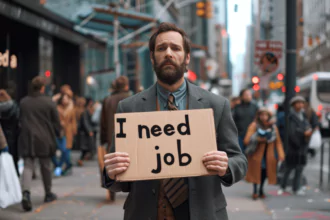Mortgage insurance plays a crucial role in the housing market, providing lenders with protection against borrower default and enabling individuals to purchase homes with smaller down payments. In this article, we will delve into the intricacies of mortgage insurance, its types, benefits, and implications for both borrowers and lenders.
What is Mortgage Insurance?
Mortgage insurance is a type of insurance that compensates lenders or investors for losses due to the default of a mortgage loan. It is typically required for borrowers who make a down payment of less than 20% of the home’s purchase price. By mitigating the risk for lenders, mortgage insurance allows them to offer loans to a broader range of borrowers.
Types of Mortgage Insurance
Private Mortgage Insurance (PMI)
Private Mortgage Insurance (PMI) is a form of mortgage insurance offered by private insurance companies. It is usually required for conventional loans with a down payment of less than 20%. PMI protects the lender by covering a portion of the loan balance if the borrower defaults.
How PMI Works
PMI is typically paid monthly as part of the mortgage payment, though it can also be paid upfront or financed into the loan. The cost of PMI varies based on the loan-to-value ratio, loan amount, and the borrower’s credit score.
Mortgage Insurance Premium (MIP)
Mortgage Insurance Premium (MIP) is specific to Federal Housing Administration (FHA) loans. FHA loans are popular among first-time homebuyers due to their lower down payment requirements. MIP provides similar protections as PMI but has different cost structures and payment methods.
How MIP Works
MIP includes an upfront premium paid at closing and an annual premium divided into monthly installments. The upfront premium can be rolled into the loan amount. Unlike PMI, MIP is typically required for the life of the loan, though it can be canceled under certain conditions.
Lender-Paid Mortgage Insurance (LPMI)
Lender-Paid Mortgage Insurance (LPMI) is an alternative where the lender covers the cost of mortgage insurance by charging a higher interest rate on the loan. This option eliminates the need for monthly PMI payments but results in higher overall interest costs for the borrower.
Benefits and Drawbacks of LPMI
- Benefits: No monthly mortgage insurance payments, potentially lower initial payments.
- Drawbacks: Higher interest rates, increased long-term costs.
Benefits of Mortgage Insurance
For Borrowers
- Lower Down Payments: Mortgage insurance allows borrowers to purchase homes with down payments as low as 3-5%.
- Increased Purchasing Power: Borrowers can qualify for larger loan amounts, expanding their home-buying options.
- Credit Building: Successful mortgage payments help build and improve credit scores.
For Lenders
- Risk Mitigation: Mortgage insurance reduces the risk of loss in case of borrower default.
- Expanded Market: Lenders can offer loans to a wider range of borrowers, including those with lower down payments.
Costs of Mortgage Insurance
PMI Costs
PMI costs vary based on several factors, including:
- Loan-to-Value (LTV) Ratio: Higher LTV ratios typically result in higher PMI premiums.
- Credit Score: Borrowers with higher credit scores generally receive lower PMI rates.
- Loan Amount: Larger loan amounts may increase PMI costs.
MIP Costs
MIP costs include:
- Upfront Premium: Typically 1.75% of the loan amount, payable at closing or financed into the loan.
- Annual Premium: Varies based on loan term and LTV ratio, divided into monthly installments.
How to Avoid or Cancel Mortgage Insurance
Avoiding PMI
Borrowers can avoid PMI by:
- Making a 20% Down Payment: This eliminates the need for PMI on conventional loans.
- Choosing a Piggyback Loan: A second mortgage, often an 80-10-10 loan, where 10% is a second mortgage, and 10% is a down payment.
Canceling PMI
PMI can be canceled when:
- Loan-to-Value Ratio Reaches 78%: Automatic cancellation occurs when the LTV ratio reaches 78% of the original value.
- Borrower-Initiated Request: Borrowers can request PMI cancellation when the LTV ratio reaches 80%, typically requiring a home appraisal.
Canceling MIP
Canceling MIP is more challenging and depends on loan conditions:
- Before June 3, 2013: MIP can be canceled after 11 years if the down payment was at least 10%.
- After June 3, 2013: MIP is required for the life of the loan unless refinanced into a non-FHA loan.
Conclusion
Understanding mortgage insurance is essential for anyone considering a home purchase with a smaller down payment. It provides critical protections for lenders, enabling them to offer loans to a broader audience while also helping borrowers achieve their homeownership dreams. By comprehending the different types of mortgage insurance and their implications, borrowers can make informed decisions that align with their financial goals.
FAQ — Popular Questions and Answers
Mortgage insurance is a type of insurance that protects lenders against losses if a borrower defaults on their mortgage. It is typically required for loans with down payments of less than 20%.
Private Mortgage Insurance (PMI) is paid by the borrower, usually as part of their monthly mortgage payment. It protects the lender by covering a portion of the loan balance if the borrower defaults.
Yes, mortgage insurance can be canceled. PMI can be canceled when the loan-to-value ratio reaches 78% or when the borrower requests it at 80%. MIP cancellation depends on the terms of the loan and whether it was taken out before or after June 3, 2013.
The costs of mortgage insurance vary based on factors such as the loan-to-value ratio, credit score, and loan amount. PMI costs are typically paid monthly, while MIP includes both an upfront premium and annual premiums paid monthly.
To avoid paying for mortgage insurance, borrowers can make a down payment of at least 20% or consider options like a piggyback loan, which involves taking a second mortgage to cover part of the down payment.











